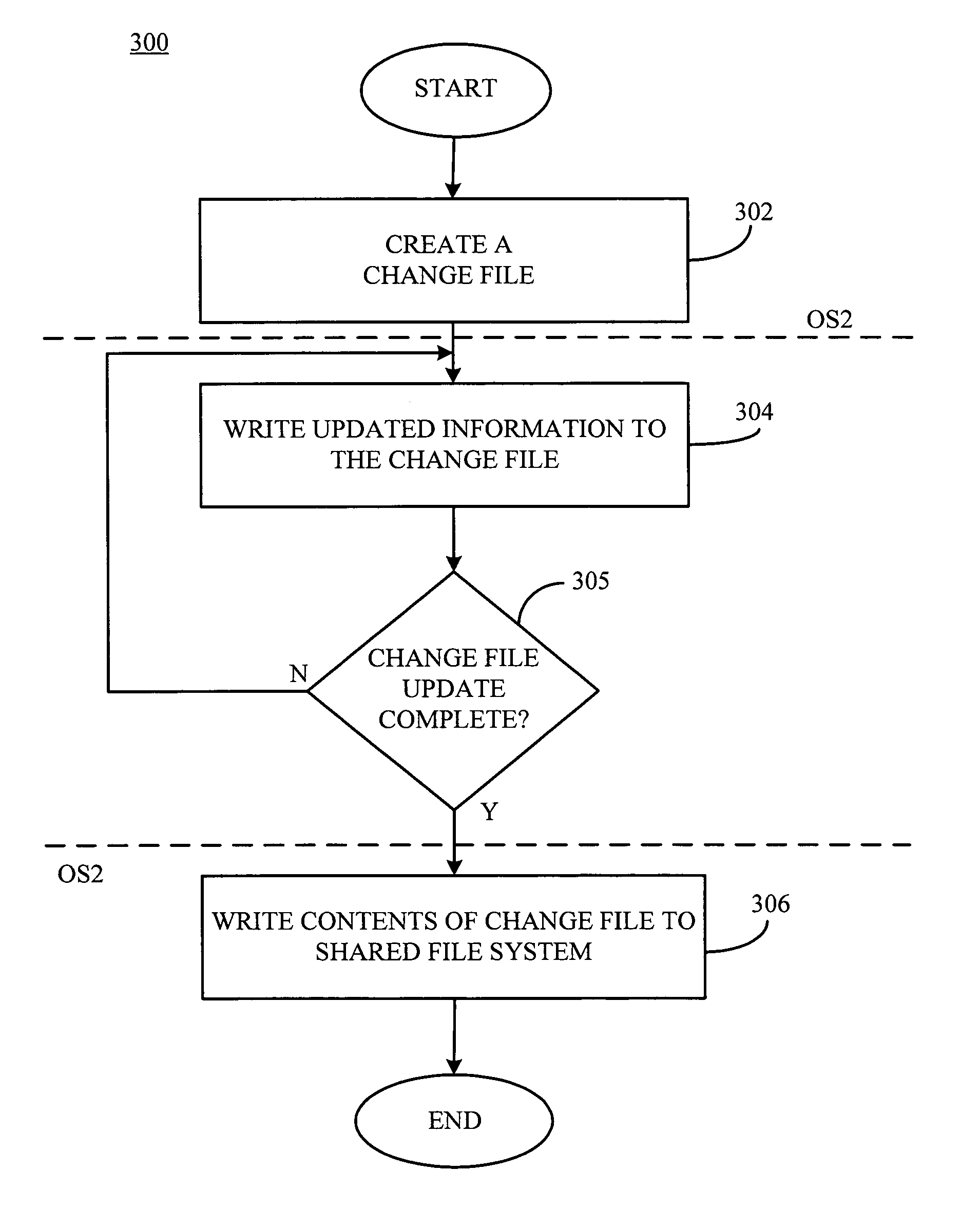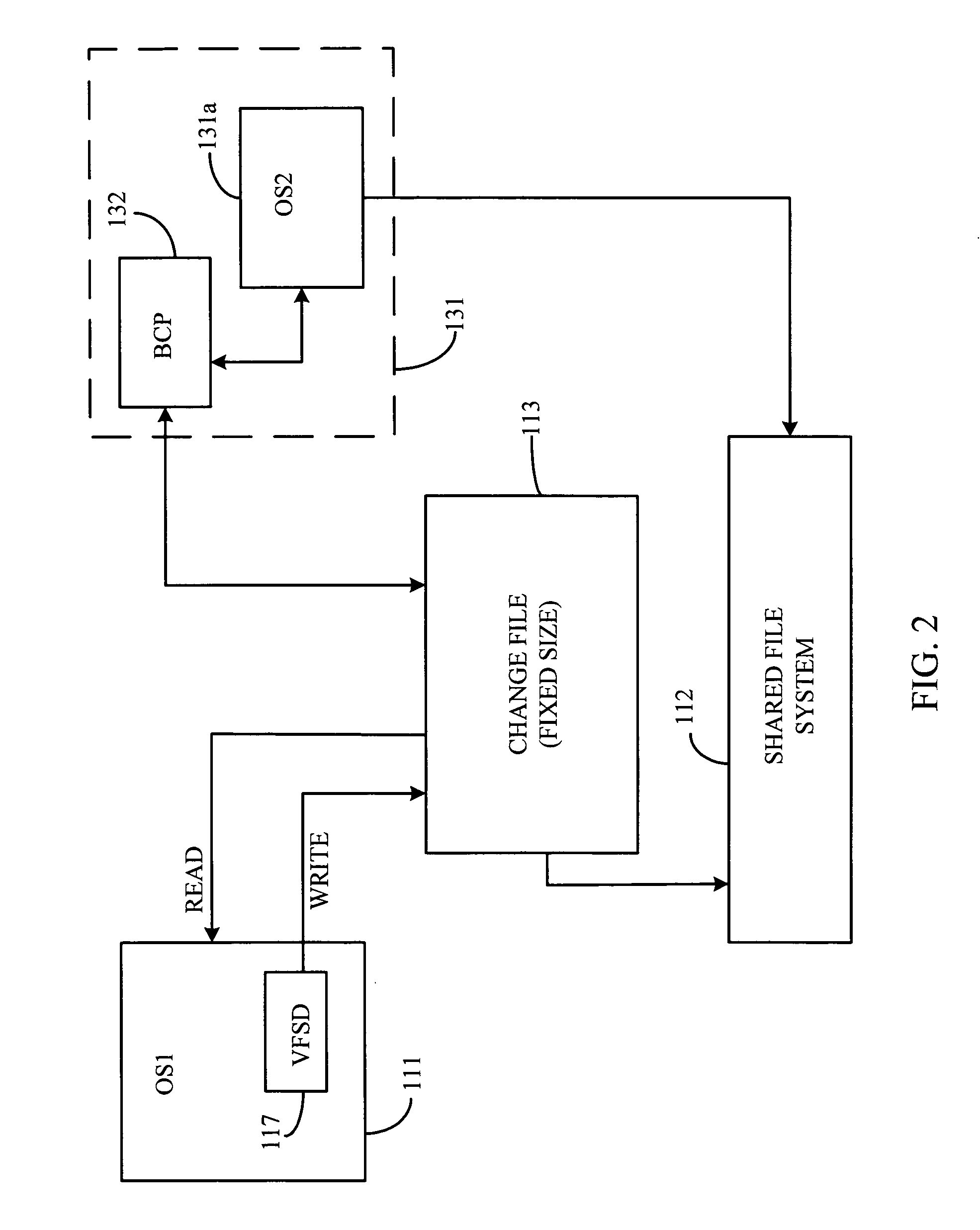Shared file system management between independent operating systems
a file system and independent technology, applied in the field of file system management, can solve the problems of not being able to access the same file system and share, and the operating system that accesses the shared file system has to be the same, so as to reduce or eliminate conflict
- Summary
- Abstract
- Description
- Claims
- Application Information
AI Technical Summary
Benefits of technology
Problems solved by technology
Method used
Image
Examples
Embodiment Construction
[0015] An exemplary embodiment of the present invention will now be described with reference to FIGS. 1-4. FIG. 1 is a schematic block diagram of an exemplary electronic device 100, for example, a desktop computer, a laptop computer, a palm top computer, a router or set-top box, a server, a personal digital assistant (PDA), a communication device, for example, a cellular telephone or other suitable device and combination thereof, configured to implement the shared file system management functionality of the present invention. For purposes of illustration, and not limitation, the electronic device 100 is implemented as a laptop computer.
[0016] The laptop computer 100 includes a processor 102 configured to control the overall operation of the device. The processor 102 may include an arithmetic logic unit (ALU) for performing computations, one or more registers for temporary storage of data and instructions, and a controller for controlling the operations of the laptop computer 100. I...
PUM
 Login to View More
Login to View More Abstract
Description
Claims
Application Information
 Login to View More
Login to View More - R&D
- Intellectual Property
- Life Sciences
- Materials
- Tech Scout
- Unparalleled Data Quality
- Higher Quality Content
- 60% Fewer Hallucinations
Browse by: Latest US Patents, China's latest patents, Technical Efficacy Thesaurus, Application Domain, Technology Topic, Popular Technical Reports.
© 2025 PatSnap. All rights reserved.Legal|Privacy policy|Modern Slavery Act Transparency Statement|Sitemap|About US| Contact US: help@patsnap.com



